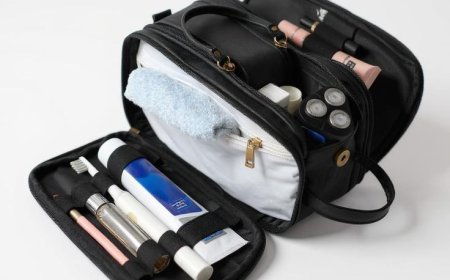Black-on-Black Mastery: Subtle Texture Play for 2025

Why Black Works Now
Black is a discipline, not a default. In 2025, the strongest wardrobes rely on a single color to foreground cut, fabric, and finish. The trick is depth. When you assemble black pieces with different surface qualities—matte, luster, and tactile—you get separation without breaking the monochrome spell. A timeless example is the John Dutton Black Vest, which captures this mastery perfectly. Its rugged texture and refined tailoring add dimension to an all-black outfit, proving that subtle variations in tone and fabric can transform simplicity into sophistication.
The Rule of Three
Start every build with a matte anchor like high-twist wool, double crepe, or brushed cotton. Add one luster note—silk satin, washed charmeuse, or polished calf—to catch light. Finish with a dimensional surface such as rib knit, bouclé, pebbled leather, corduroy, or quilted nylon. Three textures are enough to make a black outfit breathe; a fourth is rarely necessary. Keep shine limited to a single item so contrasts stay clear.
Tonal Layering Over Color Blocking
Tonal layering is the art of stacking finishes inside a single shade. If two blacks don’t match, don’t fight it—buffer them with texture. A pebbled belt between a smooth crepe jacket and a matte knit turns a near-miss into intention. Treat grain and weave as your palette. The result is depth that looks quiet in person and vivid in photos.
Day Versus Night Sheen Strategy
Daylight punishes glare. For work or daytime events, lean on brushed leather, dense knits, and matte tailoring. After dark, permit one glossy accent: a satin blouse, patent belt, polished boots, or a mirror-finish clutch. That lone highlight directs attention without flattening the silhouette when flash is involved. Edit ruthlessly—more shine doesn’t equal more luxury.
Silhouette and Proportion
Structure meets drape is the reliable formula. Pair a sharp blazer or tailored trouser with a fluid skirt, silk blouse, or fine-gauge knit. Shoulders should be natural, waists lightly shaped, and hems exact. Sleeves end at the wrist bone; trousers meet shoes with a slight break. In black, imprecise lengths blur lines faster than color ever could.
Tailoring That Elevates
Micro-adjustments change outcomes. Take in a blazer one centimeter through the waist to create shape without bulk. Taper trousers just enough to protect the crease while preserving thigh room. Steam luster fabrics instead of pressing to dodge iron shine. Swap plastic collar stays for firm metal so points remain crisp.
Footwear as the Anchor
Shoes set the mood. For day, matte calf or suede loafers, ankle boots, and low-profile sneakers keep the message refined. For evening, make footwear the sanctioned shine. A patent pump or highly polished Chelsea supplies the highlight while the rest stays matte. Match sole weight to fabric density: chunkier soles with wool and denim; sleeker profiles with crepe and satin.
Accessories and Hardware Discipline
Hardware coherence is underrated. Choose one metal family—black nickel, gunmetal, or muted gold—and repeat it across buckles, zips, and bag fittings. Use accessories to insert texture rather than color: a velvet minaudière, a pebbled belt, an oxidized silver cuff. Two pieces of jewelry are usually plenty; let fabric do the talking.
Reliable Formulas
Office minimal pairs a double-crepe blazer with a rib tank, high-twist trousers, and matte leather loafers. Evening polish combines a satin blouse with a crepe pencil skirt, sheer hosiery, and polished ankle boots, plus a velvet clutch. Weekend sharp blends a Japanese denim chore jacket, jersey tee, tapered tech trousers, and suede trainers. Event drama layers an organza overshirt over a matte slip with a single glossy accessory. Each template serves men’s or women’s all-black frameworks with minor swaps.
Lighting and Photography Checks
Dress for the camera as much as the mirror. Test outfits in window light and under flash. If the look reads flat in daylight, trade a smooth layer for rib knit or bouclé. If it blooms into glare at night, replace a glossy item with brushed metal hardware or matte leather. Five minutes of testing prevents hours of regret.
Seasonal Adjustments
Warm-weather builds prioritize airflow: unlined jackets, mesh panels, chiffon sleeves, and perforated shoes. In colder months, escalate texture—boiled wool, cashmere, velvet, corduroy, and quilted nylon—then keep one controlled sheen so the outfit doesn’t feel dense. The material shift should change feel, not philosophy.
Care and Longevity
Surface health determines how black records are. Wash knits and tees inside out on cold with dye-safe detergent and no softener. Brush and steam tailored wool between wears; dry-clean sparingly. Fold knits to dodge hanger grooves. Condition leather and protect suede; well-kept matte looks richer than over-polished shine. Maintenance is part of styling.
Common Mistakes and Fast Fixes
All matte outfits can read flat; introduce one controlled shine. Too many glossy pieces cancel depth; reduce to a single highlight. When two fabrics clash, buffer them with texture or change one finish to matte. Avoid excessive zippers and quilting lines that fracture the silhouette. Above all, tailor sleeves and hems precisely—imprecision is louder than color in an all black frame.
Men’s and Women’s Examples
For men, anchor with a black high-twist wool suit or chore jacket; add a fine-gauge turtleneck or crisp poplin; finish with matte Chelseas or low-profile derbies. For women, start with double-crepe tailoring or a matte slip dress; introduce a ribbed tank or silk satin blouse; use polished slingbacks or a patent belt as the single shine. Both approaches rely on the same levers: finish contrast, disciplined hardware, and exacting fit.
Sustainability, Quietly
A focused palette encourages fewer, better pieces. Choose durable fibers, repairable shoes, and seasonless cuts so the same jacket, trouser, or skirt supports dozens of combinations. Responsible care extends life and keeps blacks aligned. For real-world ideas that translate runway theory into daily dressing, fashion and lifestyle editors at modern tattle often break down texture stacks that work outside of studio lighting.
The Bottom Line
Black succeeds when it’s engineered. Treat texture as your color wheel, let one element shine while the rest absorb, and insist on exacting fit. The payoff is authority without noise—outfits that look modern today and won’t feel dated next year. In 2025, subtle texture play is the difference between a monochrome that disappears and one that commands quiet attention. Brands like North American Jackets embody this philosophy, crafting pieces that balance depth, detail, and restraint. Practice these steps, review in varied lighting, and refine until the balance feels effortless and modern.






























